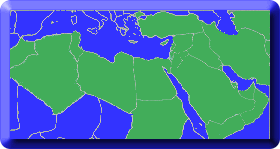
Topics in Middle Eastern and North African Economies
Document Type
Article
Publication Date
5-1-2015
Journal Title
Topics in Middle Eastern and North African Economies
Volume
17
Publisher
Middle East Economic Association and Loyola University Chicago
Abstract
The recent global financial (and economic) crisis has validated the need to assess the financial sector of the economies with rather unconventional approaches. Believing that financial markets use all the available information in an efficient manner is as questionable as finding models which test the existence of bubbles in stock exchange markets. In this respect, this paper tries to introduce a different perspective by attempting to examine the role of emerging markets in this turmoil period, termed the Great Recession. We are intrigued by the argument that stock exchange markets in emerging economies have been affected in an asymmetric manner. If this so, it is important to identify the markets that felt the effects of the contagion more than the others. The economies included are Brazil, China, India, Indonesia, Russia, South Africa and Turkey and we use the US for purposes of comparison. The data is weekly and runs through January 2003 – March 2014 with many sub-periods for pre and post crisis as necessary. We use both conventional and unconventional methods to analyze the asymmetric contagion argument. These include time domain causality (Granger, 1969), percentage of variance explained (Geweke, 1982), frequency domain causality (Breitung and Candelon, 2006) and wavelet co-movement (Rua, 2010) methods. Our preliminary findings show that the stock exchange markets with rather high concentration of foreign investors is highly affected by the recent global financial crisis. Moreover, the asymmetric contagion argument is rather verified by different and significant wavelet co-movement results for some emerging economies in the bilateral analysis with the US.
Identifier
2334-282X
ISSN
2334-282X
Recommended Citation
Çelik, Sadullah and Baydan, Emel, "Bringing a New Perspective on Co-Movements of Stock Markets in Emerging Economies Through Causality and Wavelet Analysis". Topics in Middle Eastern and North African Economies, electronic journal, 17, Middle East Economic Association and Loyola University Chicago, 2015, http://www.luc.edu/orgs/meea/
Creative Commons License

This work is licensed under a Creative Commons Attribution-Noncommercial-No Derivative Works 3.0 License.
Copyright Statement
© 2015 the authors



Comments
Presentation of the articles in the Topics in Middle Eastern and North African Economies was made possible by a limited license granted to Loyola University Chicago and Middle East Economics Association from the authors who have retained all copyrights in the articles. http://www.luc.edu/orgs/meea/volume17/meea17.htm